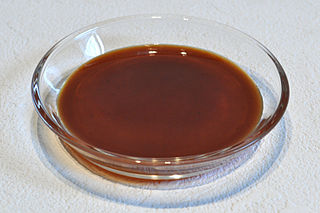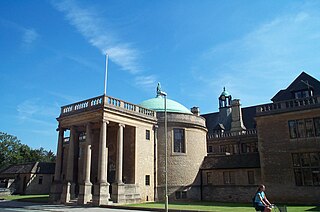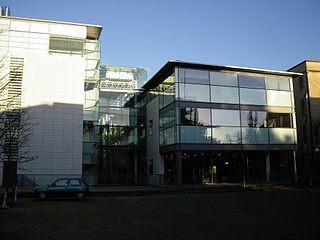
The Cavendish Laboratory is the Department of Physics at the University of Cambridge, and is part of the School of Physical Sciences. The laboratory was opened in 1874 on the New Museums Site as a laboratory for experimental physics and is named after the British chemist and physicist Henry Cavendish. The laboratory has had a huge influence on research in the disciplines of physics and biology.

Sir John Edward Lennard-Jones KBE, FRS was a British mathematician who was a professor of theoretical physics at University of Bristol, and then of theoretical science at the University of Cambridge. He may be regarded as the initiator of modern computational chemistry.
Donald James Cram was an American chemist who shared the 1987 Nobel Prize in Chemistry with Jean-Marie Lehn and Charles J. Pedersen "for their development and use of molecules with structure-specific interactions of high selectivity." They were the founders of the field of host–guest chemistry.

Nevil Vincent Sidgwick FRS was an English theoretical chemist who made significant contributions to the theory of valency and chemical bonding.
The Waynflete Professorships are four professorial fellowships at the University of Oxford endowed by Magdalen College and named in honour of the college founder William of Waynflete, who had a great interest in science. These professorships are statutory professorships of the University, that is, they are professorships established in the university's regulations, and which are by those regulations attached to Magdalen College in particular. The oldest professorship is the Waynflete Professor of Metaphysical Philosophy. The three science professorships were created following the recommendation of the University Commission in 1857, in recognition of William of Waynflete's lifetime support of science. The professorships are the Waynflete Professor of Chemistry, the Waynflete Professor of Physiology, and the Waynflete Professor of Pure Mathematics.
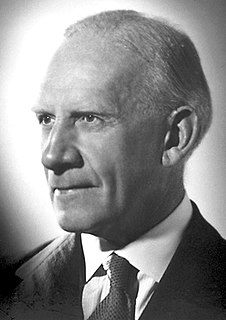
Sir Robert Robinson was a British organic chemist and Nobel laureate recognised in 1947 for his research on plant dyestuffs (anthocyanins) and alkaloids. In 1947, he also received the Medal of Freedom with Silver Palm.
Sir Derek Harold Richard Barton was an English organic chemist and Nobel Prize laureate for 1969.
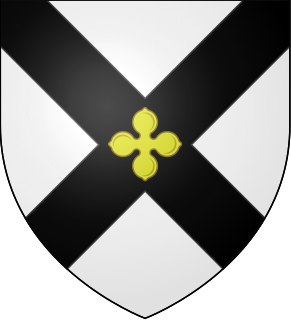
Sir Jack Edward Baldwin is a British chemist. He is a former Waynflete Professor of Chemistry at the University of Oxford (1978–2005) and the former head of the organic chemistry at Oxford.
Charles William Dyson Perrins FRAS was an English businessman, bibliophile and philanthropist. He was born in Claines, near Worcester, the son of James Dyson Perrins, the owner of the Lea & Perrins Worcestershire sauce factory and the grandson of William Perrins, co-originator of the Lea & Perrins secret recipe.
William Henry Perkin Jr., FRS HFRSE was an English organic chemist who was primarily known for his groundbreaking research work on the degradation of naturally occurring organic compounds.

The Oxford University Science Area in Oxford, England, is where most of the science departments at the University of Oxford are located.

Wilson Baker FRS was a British organic chemist.
Sir Ewart Ray Herbert Jones FRS was a Welsh organic chemist and academic administrator, whose fields of expertise led him to discoveries into the chemistry of natural products, mainly steroids, terpenes and vitamins. His work also led to the creation of the Jones oxidation.

The School of Chemistry at the University of Manchester is one of the largest Schools of Chemistry in the United Kingdom, with over 600 undergraduate and more than 200 postgraduate research students.
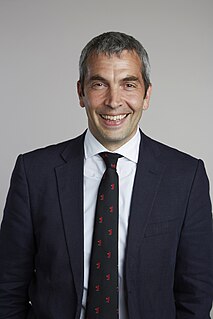
Benjamin Guy Davis is a Professor of Chemistry in the Department of Chemistry at the University of Oxford and a Fellow of Pembroke College, Oxford.

The Department of Chemistry is the chemistry department of the University of Oxford, England, which is part of the university's Mathematical, Physical and Life Sciences Division
Sir Thomas Weston Johns Taylor, was an English chemist, academic, and university administrator.
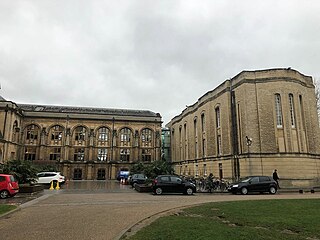
Parks College is a new constituent college of the University of Oxford in England. The plans for the new graduate college were announced in December 2018. It is the first new Oxbridge college since 1990, when the graduate Kellogg College was established.



